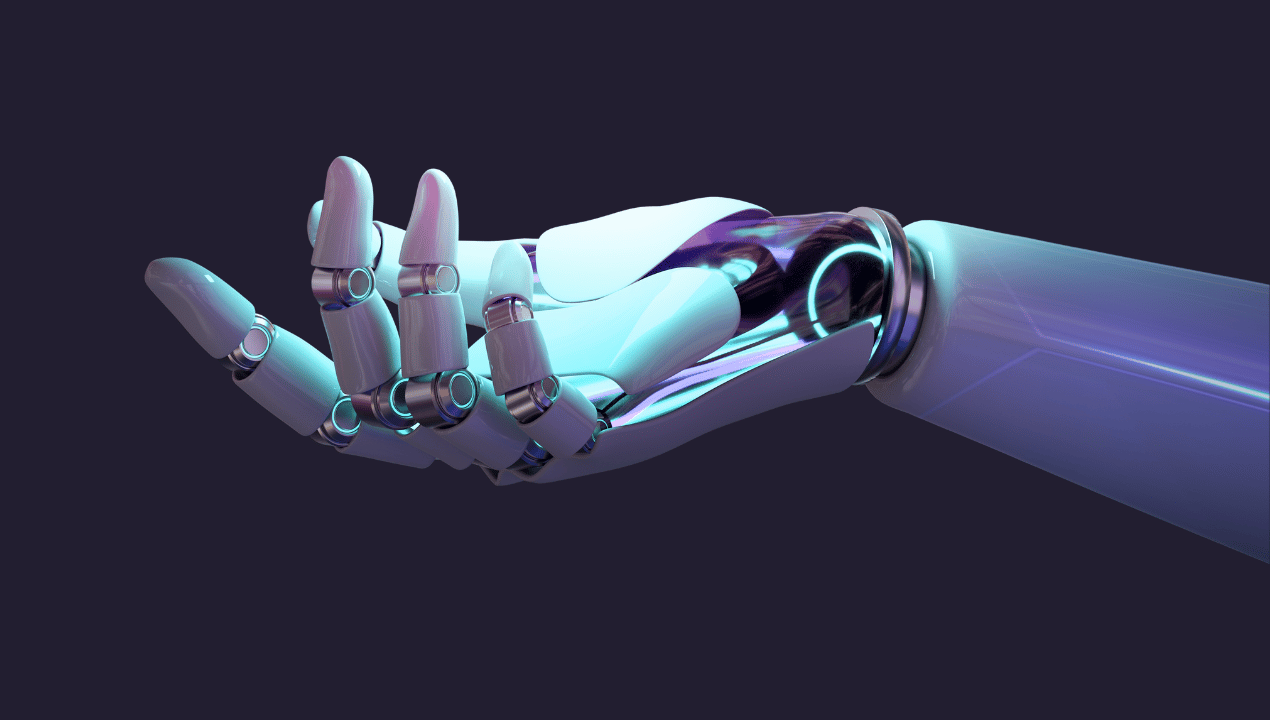Unplanned downtime is expensive, stressful, and unnecessary. The next wave of predictive maintenance fixes that by moving intelligence to the edge. Sensors sit on motors, pumps, conveyors, and presses. Tiny models learn normal behavior from vibration, sound, temperature, current, and pressure. When patterns drift in a risky direction, the system alerts your team instantly so you repair during a planned lull, not during the busiest shift. This is Predictive Maintenance 2.0, a practical blend of edge computing, machine learning, and smart operations that keeps lines moving, quality stable, and safety high. In this article, we’ll explore predictive maintenance 2.0 and learn how edge AI is preventing machine failure in real-time.
Why Predictive Maintenance 2.0 Beats The Old Approach
Traditional maintenance lives on a calendar. You replace bearings every six months whether they need it or not. That wastes parts and labor. Classic cloud based predictive setups improved this with batch analytics, but they still depend on sending raw data to the cloud. Edge AI learns and decides on site.
You get millisecond level anomaly detection with no dependency on uplink quality. The result is faster warnings, lower bandwidth cost, and stronger privacy for sensitive production data. You also protect operations during network outages because the logic lives next to the machine, not miles away.
What “Real Time” Really Means On The Factory Floor: AI Preventing Machine Failure
Real time does not mean theoretical zero delay. It means fast enough to influence the outcome. For a high speed spindle, that may be tens of milliseconds. For a chiller or pump, seconds are fine. Edge devices sample signals at the right cadence, run inference locally, then send only the results or compact features to the cloud.
This keeps alerts snappy and data volumes manageable. Your team sees issues while they can still choose a safe stop, order parts, and keep customer deadlines intact.
The Core Building Blocks Of Edge AI Maintenance
Sensors And Signal Quality
Accelerometers, microphones, thermistors, current clamps, and pressure transducers feed the models. Mounting quality and noise control matter as much as the sensor spec. A clean signal reduces false alarms and training time.
Feature Extraction
Edge devices compute short windows of features like vibration harmonics, RMS energy, kurtosis, spectral peaks, and temperature deltas. Good features make simple models powerful and easier to explain to technicians.
Local Models
Lightweight algorithms run on microcontrollers or single board computers. Common choices include one class SVMs, isolation forests, small CNNs for spectrograms, and autoencoders for reconstruction error. The goal is reliable detection that fits in tiny memory footprints.
Adaptive Baselines: Preventing Machine Failure Real-Time
Machines age and seasons change. Predictive Maintenance 2.0 uses rolling baselines and scheduled re training to avoid alert fatigue. If a compressor always runs hotter in August, the model learns that pattern without silencing true problems.
Human In The Loop: AI Preventing Machine Failure
Edge AI does not replace technicians. It amplifies them. A clear label like bearing inner race fault is worth more than a raw anomaly score. Pair alerts with a checklist and likely root causes so the fix happens on the first visit.
Where Edge AI Shines Across Industries
Discrete Manufacturing
Spindles, gearboxes, conveyors, fans, and pick and place robots all produce steady signals. Edge models catch misalignment, looseness, and imbalance before scrap rates spike.
Process Industries: Preventing Machine Failure Real-Time
Pumps, compressors, chillers, and blowers are classic candidates. Cavitation, seal wear, and fouling reveal themselves in vibration and sound long before a hard stop.
Logistics And Fleets
Forklifts and automated guided vehicles have rich telemetry. Edge devices detect battery degradation, motor wear, and brake anomalies during normal duty cycles so vehicles stay available.
Mining And Heavy Equipment AI Preventing Machine Failure
Harsh environments limit reliable connectivity. Edge systems monitor shovels, crushers, and haul truck components locally and sync summaries when the network is stable.
A Practical Table To Guide Your Deployment
| Asset Type | Edge Signal To Capture | Model Idea | Typical Warning Window | Action Playbook |
|---|---|---|---|---|
| Induction Motor And Bearing | Triaxial vibration and temperature | Spectrogram plus small CNN or one class SVM on harmonic features | Days to weeks before audible noise | Plan bearing swap, order parts, check alignment |
| Centrifugal Pump | Vibration, suction pressure, discharge pressure, acoustic mic | Autoencoder on frequency bands to catch cavitation and imbalance | Hours to days depending on duty | Reduce flow, inspect impeller, schedule rebuild |
| Conveyor Gearbox | Vibration and oil temp | Isolation forest on RMS and kurtosis | Weeks before gear wear becomes severe | Lubrication check, backlash inspection, set swap window |
| Industrial Fan | Vibration and current | Trend model on current plus imbalance features | Days to weeks | Clean blades, tighten mounts, rebalance |
| Chiller Or HVAC | Temperature deltas and power draw | Regression to expected COP versus ambient plus anomaly score | Hours to days during seasonal swings | Coil cleaning, refrigerant check, valve inspection |
| Forklift Or AGV | Motor current, battery voltage, brake temp | Gradient model for health score and anomaly flags | Days to weeks before battery or brake failure | Battery maintenance, brake pad swap, route revision |
Implementation Steps That Actually Work: AI Preventing Machine Failure
Start With One Line And A Few Assets
Choose a high impact machine family with known pain points. Two or three identical assets let you compare signals and speed learning.
Instrument For Signal Quality
Spend an extra hour on sensor placement and cable management. A clean mount and shielded runs beat any model tweak later.
Prototype On A Bench
Record baseline signals from a healthy asset. Introduce simple faults if safe or use historical examples. Validate that your features and model separate normal from problem states.
Deploy In Shadow Mode
Run the system without alerts for a week. Compare its anomaly flags to operator notes and historian data. Tune thresholds with real context.
Enable Clear Alerts And Roles
When you go live, decide who gets what. Maintenance receives work orders. Supervisors see health trends. Operators get simple status cards with an acknowledge button.
Close The Loop
After each intervention, label the outcome in your system. Success and false alarms improve the next model update. Over time you will tune sensors, features, and thresholds to your exact environment.
Cybersecurity And Governance Without Drama
Edge devices are endpoints. Treat them with the same care as any workstation. Use signed firmware, least privilege for service accounts, and network segmentation. Keep logs of model versions, thresholds, and alert changes. If an audit comes, you can show when and how decisions were made. That builds trust between reliability, operations, and compliance teams.
Cost And ROI In Plain Numbers
The full cost includes sensors, edge hardware, integration time, and a small budget for training and upkeep. The return comes from avoided downtime, avoided scrap, energy savings, and better parts planning. Teams commonly see double digit cuts to unplanned stops and faster mean time to repair because technicians arrive with a likely cause and parts in hand. In fleets and logistics, edge maintenance often extends battery life and reduces overtime because you schedule work when it least hurts throughput.
Common Pitfalls To Avoid: AI Preventing Machine Failure
Alert Firehose
Too many alerts erode trust. Start conservative, then sharpen as labels grow.
Model Obscurity
If no one understands what the score means, no one will act. Pair every alert with a plain language guess and a checklist.
Ignoring Environment
Temperature, humidity, and load shifts change signals. Use context sensors and adaptive baselines.
Overreliance On Cloud
Sync summaries to the cloud for dashboards and long term learning, but never depend on it for immediate safety calls. Keep core inference local.
One And Done Mindset
Machines and processes evolve. Schedule quarterly reviews. Retire sensors that add little value. Add signals that close detection gaps.
Your First Sixty Days, A Simple Plan
Week 1
Pick assets, goals, and owners. Document failure modes in plain language.
Week 2 AI Preventing Machine Failure
Install sensors on one asset. Capture clean baselines during normal production.
Week 3
Build and validate a simple model offline. Confirm it separates known events from healthy data.
Week 4
Deploy edge hardware to three assets. Run in shadow mode and collect operator feedback.
Week 5
Enable alerts with conservative thresholds. Create short playbooks for the top three fault types.
Week 6
Add internal dashboards. Review false alarms and misses. Adjust features and thresholds.
Week 7 to 8
Roll to a second cell or line. Standardize mounts, labels, and alert routing so scale does not add chaos.
AI Preventing Machine Failure Frequently Asked Questions
Is Edge AI Only For New Factories
No. Retrofitting works. Many wins come from adding sensors and small computers to legacy machines that were never designed to be smart.
Do I Need A Data Scientist On Site
Not always. Start with proven features and lightweight models. Partner with a specialist for initial templates, then train maintenance and controls engineers to own tuning.
What If Connectivity Is Unreliable
That is exactly why edge matters. Run inference locally. Sync summaries and health scores when the network is available.
How Soon Will We See Results
Teams often catch actionable issues within two to four weeks. Bigger cultural wins appear after one or two cycles when alerts translate into fewer late night callouts and more planned work.
Can We Use Existing PLC Data
Yes. Many signals already exist in PLCs and SCADA. Add high frequency sensors where needed and let the edge box fuse both sources for better accuracy.
The Bottom Line
Predictive Maintenance 2.0 is not a lab demo. It is a shop floor upgrade that turns raw signals into early, trustworthy warnings. Start small, respect signal quality, keep models simple, and teach the system with every fix. In a few months you will spend less time reacting, more time improving, and you will hit delivery promises with fewer surprises.



![Top 50 Most Downloaded AI Apps [Official Ranked List]](https://openaisuite.com/wp-content/uploads/2025/11/Top-50-Most-Downloaded-AI-Apps-Official-Ranked-List-110x110.png)




